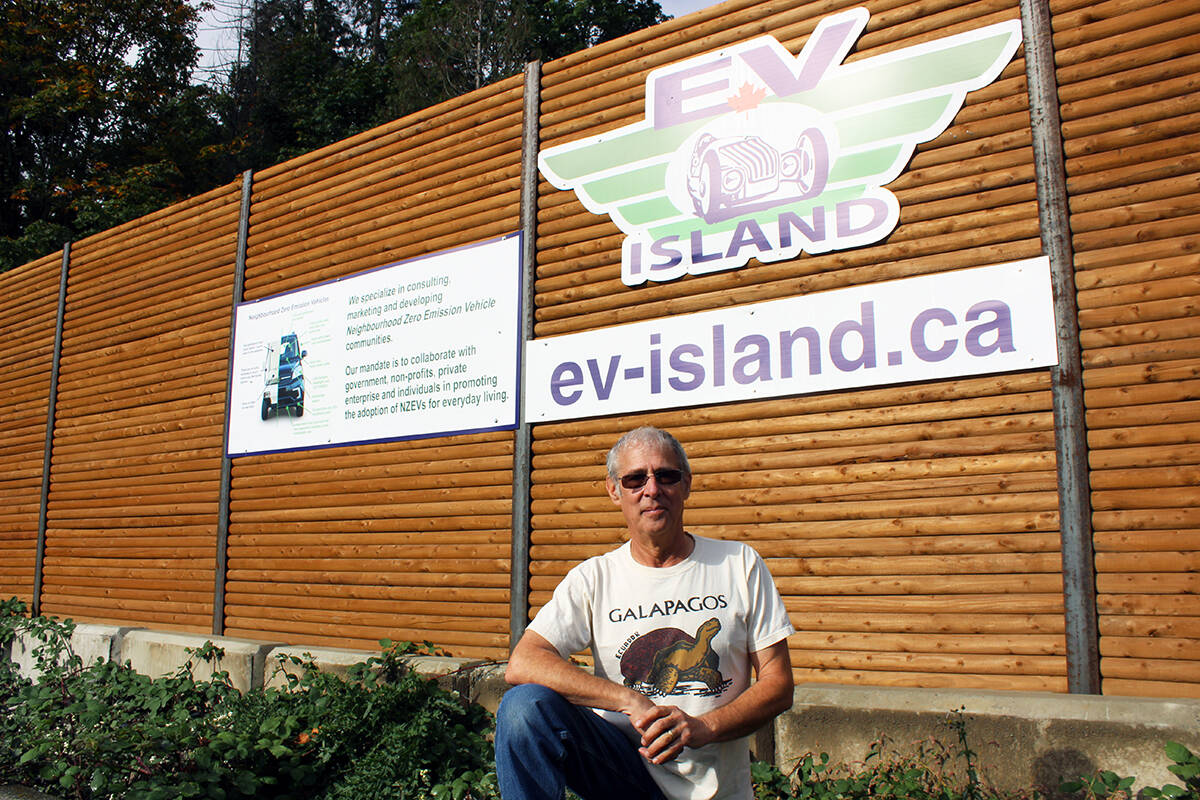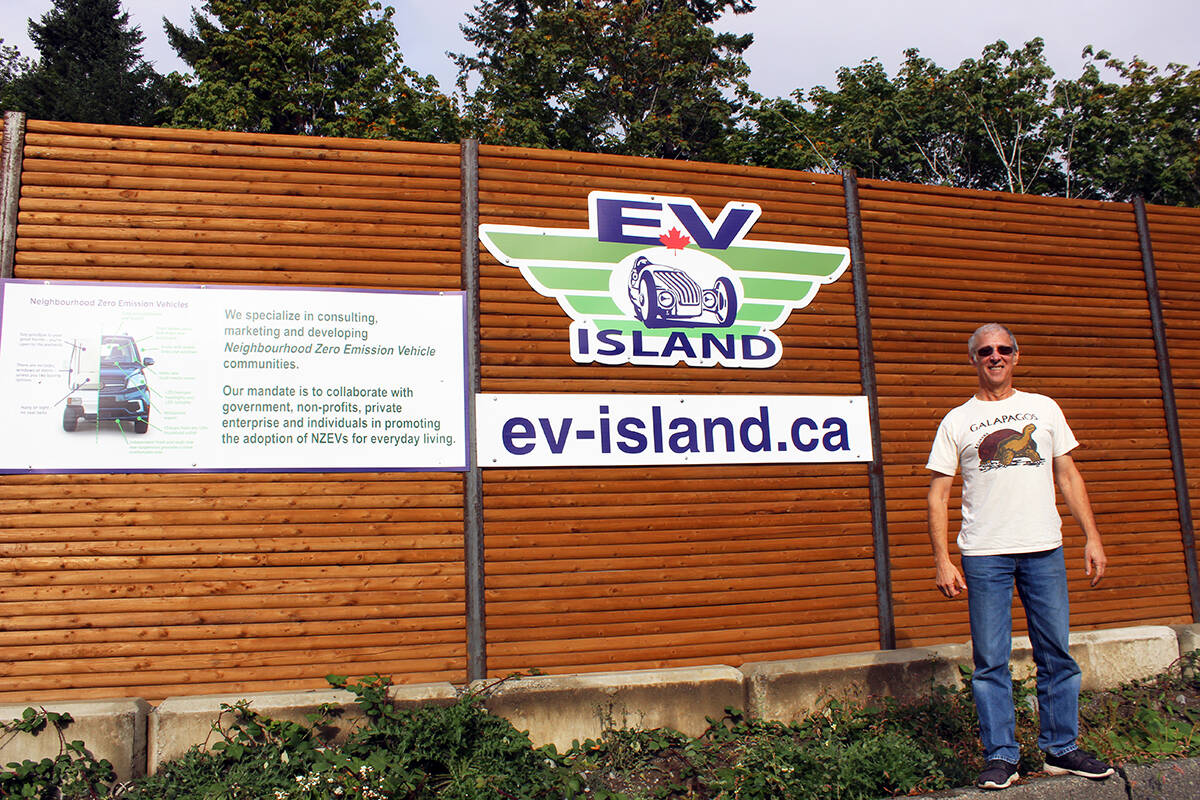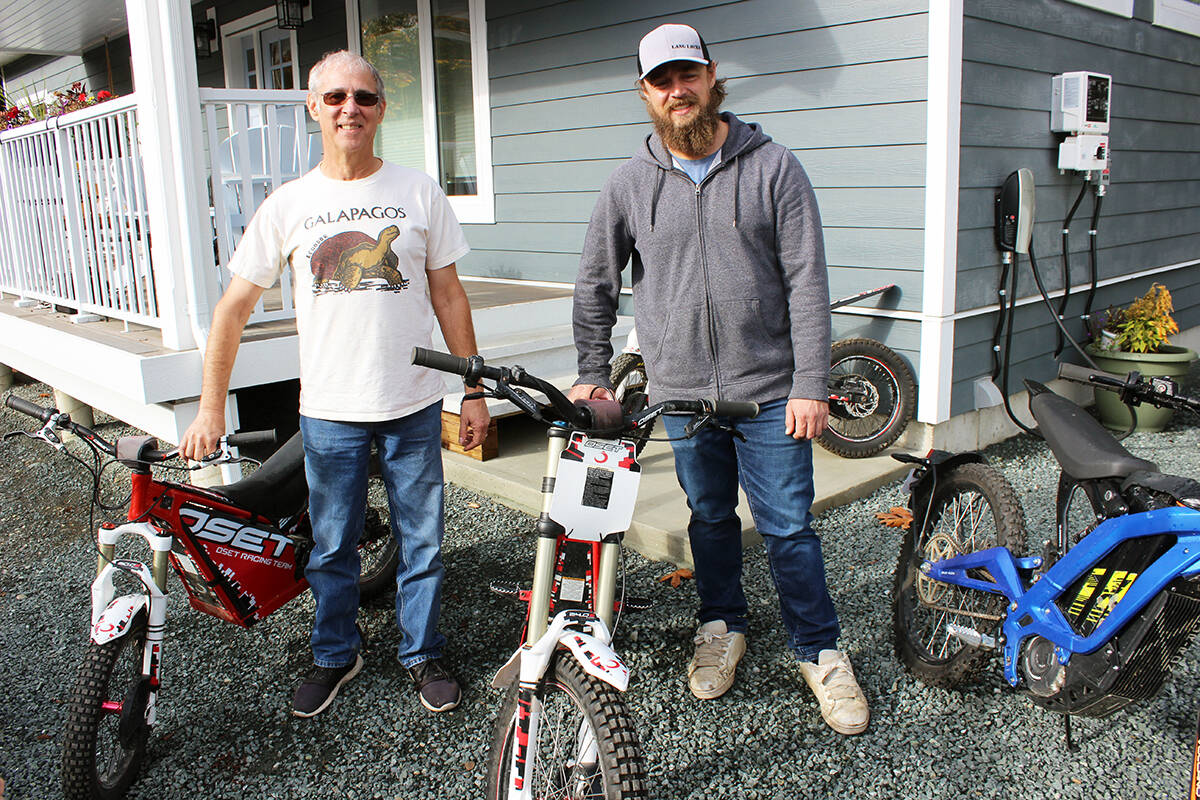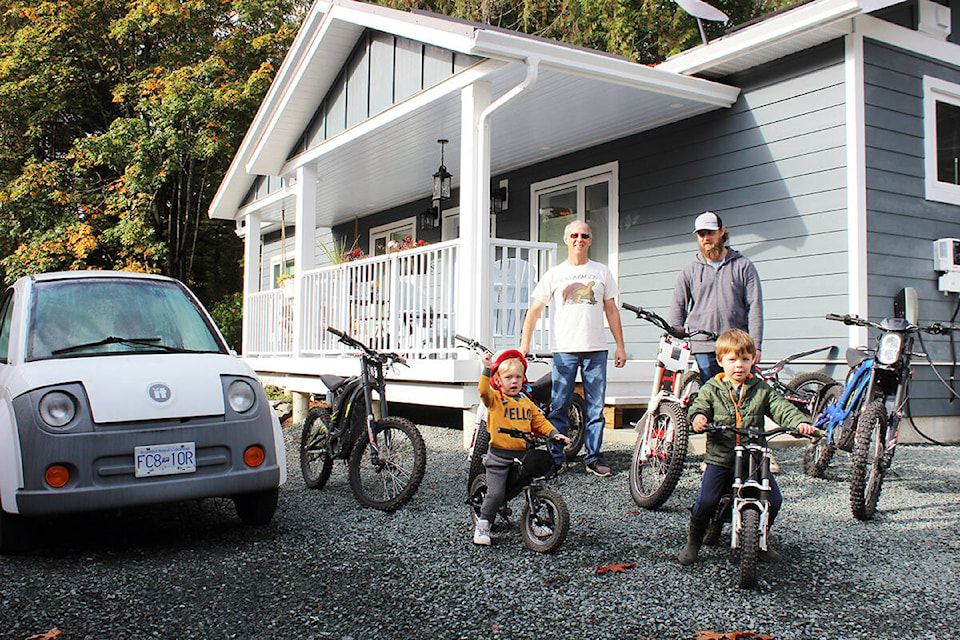Climate change is fueling huge changes to the way we live, including the vehicles we drive.
Canada has been slow to embrace electric vehicles and is at the tail end of adoption by industrialized countries. “Neighbourhood electrics can assist in catching up, if we let them,” said Dave Haberman of Chemainus, who recently opened a home office for a new business known as EV Island at 8662 Trans Canada Highway near the Chemainus River bridge.
Canada’s pledge for transitioning to electric vehicles and 100 per cent zero emission new vehicle sales by 2035 were a key component of the recent United Nations Climate Change Conference (COP26) held in Glasgow, Scotland from Oct. 31-Nov 12. COP stands for conference of the parties under the UN Framework Convention on Climate Change and this was the 26th iteration of the annual meeting.
What happens between now and zero-emission target dates for getting countries around the world on board remains to be seen. Haberman sees Neighbourhood Zero Emission Vehicles as part of the solution.
“We specialize in consulting, marketing and developing Neighbourhood Zero Emission Vehicle projects,” explained Haberman. “Our mandate is to collaborate with government, non-profits, private enterprise and individuals in promoting the adoption of clean energy for everyday living.”
Ironically, his family background was partly in the oil industry, but he’s done his homework on the effects of burning fossil fuels and alleviating the climate crisis.
“It always comes down to economics,” said Haberman. “To go mainstream, the technology needs to be cheaper and better.”
He sees these NZEVs as a transportation solution for seniors not requiring a full size auto. “Light electrics cost just a couple of pennies per kilometre to operate and charge up on a common 120 volt household plug,” said Haberman. “We’re right on the brink of a brand new personal transportation category.”
He considers Vancouver Island as Ground Zero for the Neighbourhood EV movement and has big plans for how Chemainus could play an integral part in it. Contact has already been made with the Municipality of North Cowichan about formulating a road map and Haberman is excited to see it develop.
It’s all been a long time coming for Haberman, who’s somewhat of a jack of all trades with a background that also includes previous ownership of Kentucky Fried Chicken locations and land development. He had lived in Chemainus previously before moving away and then returning.
“In 2006 my company, Haberman Development Corp., was building Stone Gate Estates and I spotted a few of our residents driving golf carts between our Chemainus development and the Mount Brenton Golf Course,” Haberman explained. “I proposed using this route to establish a Neighbourhood Electric Vehicle Corridor, but acquiring street legal vehicles, insurance and government approval was insurmountable, so the idea was shelved.”
In the fall of 2017, he purchased a 2001 Dynasty neighbourhood electric vehicle built in B.C. The car was made roadworthy, plated and insured. It was grandfathered in as street legal before Transport Canada de-listed the manufacturer from selling cars in Canada. In September of 2017, Haberman and Rob Janssen legally drove the car from the Mount Brenton Golf Course to Stone Gate Estates.
Things further developed in 2018 when Haberman opened an office in Vernon and launched an NEV division. “We assisted American built e-Ride in getting on Transport Canada’s approved low speed vehicle import list.”
This category began as golf carts modified for the street in the early 1960s. Del Webb, a land developer, is credited with using them in his housing developments and the success of Sun City, Arizona spawned several projects across the United States sunbelt. U.S. municipalities started jumping in with similar developments and all but three U.S. states now have NEV legislation.
“Today, this segment has grown into a modified sub-compact, complete with a cabin heater and all the conveniences of larger cars, but with a top speed of 40 km/hr and a distance capability of around 50 km,” Haberman pointed out. “Consequently, these cars have quite attractive pricing.
“Arguably, my vintage Dynasty was 20 years ahead of its time.”
More than 25 B.C. municipalities have now adopted neighbourhood zero emission vehicle bylaws for these cars.
Haberman advocates allowing 15-year-olds a limited B.C. drivers license for NZEVs as many European and Asian countries have done with the logic that “new drivers that start with electric are likely to stay with electric.”
Haberman points out CleanBC just released a road map to a carbon-free economy for our province.
“An accelerated EV law states that 26 per cent of all new light duty vehicles will be zero emission by 2026, 90 per cent by 2030 and 100 per cent by 2035.
“B.C. will complete our electric highway within two years and have 10,000 public charging stations by 2030. Local government incentives are yet to be announced.”
In the meantime, Haberman is encouraging government, business or individuals promoting renewable energy to email him at dave.haberman@gmail.com to discuss adding a free sign to the fence at his office location.




